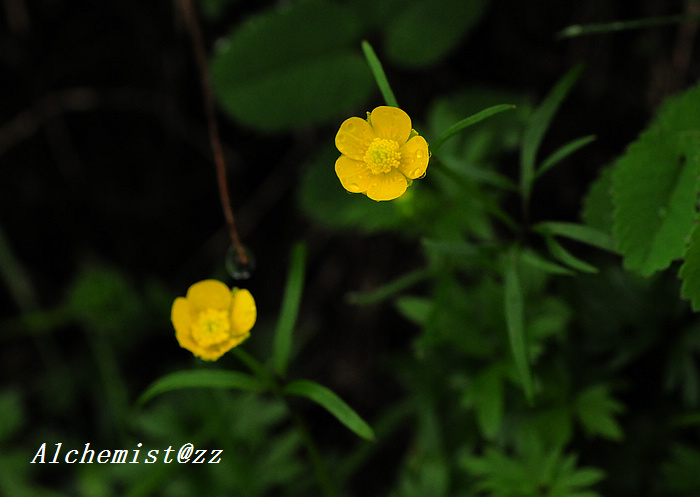- Scientific Name: Ranunculus paishanensis Kitag.
- Ref: J. Jap. Bot. 19:69. 1943
- Synonym: Ranunculus japonicus Thunb. var. monticola Kitag.
- Chinese Common Name: 白山毛茛 Báishān máogèn
- Family: Ranunculaceae
- Genus: Ranunculus
- Distribution: Grassy slopes, meadows, rocks, Betula forests; 1400–2500 m. S Jilin (Changbai Shan).
- Photo: 07/22/2010, Mt. Changbai, Jilin
Herbs perennial. Roots fibrous, subequally thick. Stems slender, 10--70 cm, strigose, branched or simple. Basal leaves ca. 5; petiole 2.2--23 cm, strigose; blade usually 3-partite, variable in shape, pentagonal or subreniform, 0.8--4.4 × 1.6--5.5 cm, papery, strigose, base cordate or subtruncate; central lobe rhombic or broadly rhombic, 3-lobed, incised-dentate; lateral lobes obliquely flabellate, unequally 2-cleft; leaf blade sometimes 3-sect; central segment rhombic, 3-partite, lateral segments unequally 2-partite, ultimate lobes linear-lanceolate. Lower stem leaves short petiolate, upper ones sessile, 3-sect, segments linear-lanceolate. Monochasium terminal, 2- to many flowered; bracts 3-sect, segments linear. Flowers 1--1.6 cm in diam. Pedicel 1.5--4 cm, strigose. Receptacle glabrous. Sepals 5, elliptic-ovate, 3.6--6 mm, abaxially strigose. Petals 5, obovate or broadly obovate, 5.5--8.5 × 3.7--7 mm, nectary pit covered by a scale, apex rounded. Stamens numerous; anthers oblong or broadly oblong. Aggregate fruit subglobose, 3.5--4.5 mm in diam. Achene obliquely broadly obovate, ca. 2 × 1.6 mm, glabrous, narrowly marginate; style persistent, 0.2--0.3 mm. Fl. Jul--Aug. (Flora of China)
